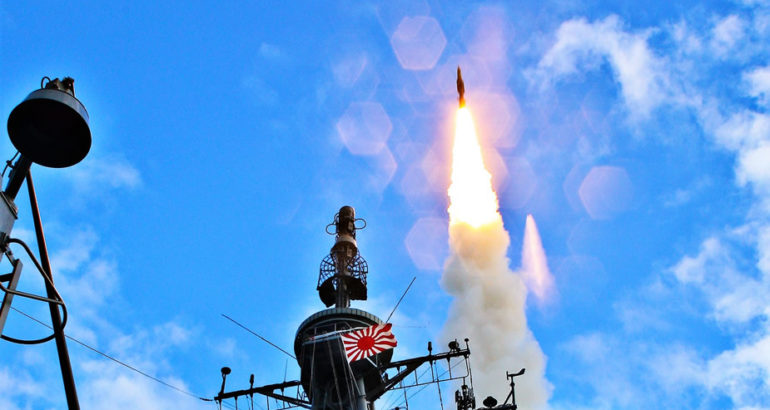The Government of Japan has requested to buy up to seventy-three (73) Standard Missile-3 (SM-3) Block IIA missiles. Also included are MK 29 Canisters with packing, handling, storage, and transportation (PHS&T) kits; up to ten (10) Special Assignment Airlift Mission (SAAM) flights; U.S. Government and contractor representatives’ technical assistance, engineering and logistical support services, and other related elements of logistics and program support. The estimated cost is $3.295 billion.
These missiles are likely intended to be fitted on the Japan Maritime Self-Defense Force (JMSDF) Aegis destroyers such as the four Kongo-class, the two Atago-class or the future two Maya-class of destroyers.
These missile could also be deployed from the Aegis Ashore system recently procured by Japan. The U.S. Department of State approved the sale of two such batteries to Japan in January. They will be installed in Akita and Yamaguchi prefectures and are set to be operational from 2025.

According to its developper and manufacturer Raytheon, The SM-3 interceptor is a defensive weapon the U.S. Navy uses to destroy short- to intermediate-range ballistic missiles. The interceptor uses sheer force, rather than an explosive warhead, to destroy its target. Its “kill vehicle” hits threats with the force of a 10-ton truck traveling 600 mph. This technique, referred to as “hit-to-kill,” has been likened to intercepting a bullet with another bullet.
Back in April this year, the U.S. State Department approved a similar FMS deal to Japan of up to fifty-six (56) Standard Missile-3 (SM-3) Block IB missiles for an estimated cost of $1.150 billion.
About SM-3 Block IIA Interceptor
The SM-3 Block IIA is designed to destroy SRBM (short range ballistic missile) and IRBM (intermediate-range ballistic missiles). It is a joint development project started in 2006 by Raytheon and Japan’s Mitsubishi Heavy Industries.
Compared to previous variant of the missile (like the SM-3 Block IB), the Block II1 variant features a larger rocket motor and a larger kinetic interceptor.
The SM-3 Block IIA successfully completed a full engagement test against a medium-range ballistic missile target in October 2018.







One Comment
Pingback : Raytheon & Missile Defense Agency Sign $2 billion SM-3 Block IB Interceptor Contract - Naval News